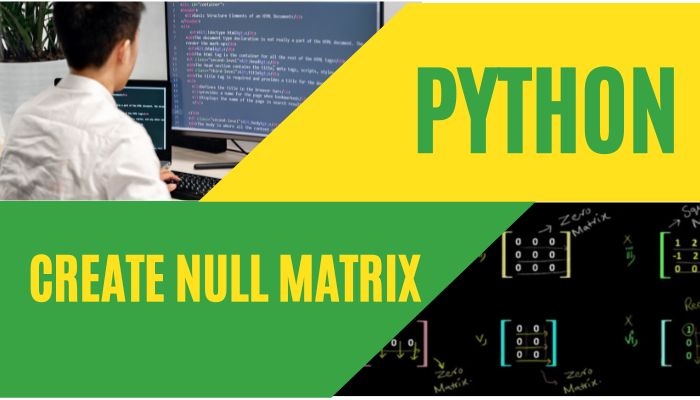How to Create a Null Matrix in Python?
Learn how to create these essential empty matrices using NumPy, a powerhouse for numerical operations.
Creating Null Matrices in Python: A Comprehensive Guide
Null matrices, also known as empty matrices, are matrices filled with zeros. They play a crucial role in various mathematical and computational applications. In Python, creating null matrices is a straightforward process using the NumPy library, a powerful tool for numerical operations.

The Role of NumPy in Matrix Manipulation
NumPy (Numerical Python) is a versatile library that facilitates efficient numerical computation in Python. It provides a comprehensive set of functions and data structures specifically designed for handling arrays and matrices. Among its many capabilities, NumPy excels in creating and manipulating matrices, including null matrices.
Creating Null Matrices with NumPy's empty() Function
The empty() function in NumPy offers a convenient method for creating null matrices. It allocates memory for the specified matrix dimensions but leaves the entries uninitialized. This approach is particularly useful when the matrix size is known but the values are not yet determined.
import numpy as np
# Create a 2x3 null matrix using np.empty() null_matrix = np.empty((2, 3))
print(null_matrix)This code snippet generates a 2x3 matrix with uninitialized entries, represented by nan (not a number) values.
Creating Null Matrices with NumPy's zeros() Function
Another approach involves utilizing NumPy's zeros() function. Unlike empty(), zeros() not only allocates memory but also initializes all matrix entries to zero. This method is preferred when explicitly setting all elements to zero is desired.
import numpy as np
# Create a 2x3 null matrix using np.zeros()
null_matrix = np.zeros((2, 3))
print(null_matrix)
This code generates a 2x3 matrix with all entries set to zero.
Advantages of Null Matrices
Null matrices offer several advantages in various contexts:
- Initialization: They serve as a convenient starting point for matrices that will be filled with values later.
- Computational Efficiency: Operations involving null matrices can be optimized due to the absence of numerical values.
- Data Representation: They represent the absence of data or zero-valued quantities in mathematical models.
Applications of Null Matrices
Null matrices find applications in diverse fields, including:
- Linear Algebra: They are used in solving systems of linear equations and representing linear transformations.
- Machine Learning: They serve as placeholders for missing data or initializing weights in neural networks.
- Statistics: They represent zero-valued contributions to statistical measures or indicate the absence of relationships between variables.
Conclusion
Null matrices are fundamental tools in Python for numerical computations. Utilizing NumPy's empty() and zeros() functions facilitates their creation, enabling efficient matrix manipulation and problem-solving in various fields.
